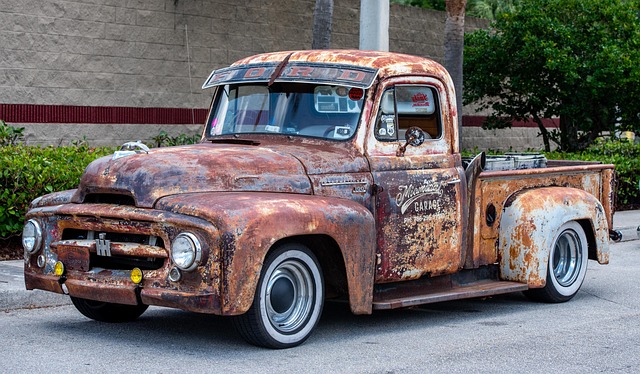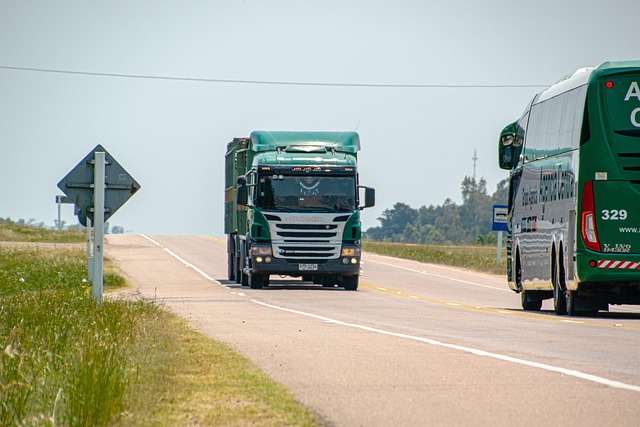Looking to register your car in California? Navigating the process can seem daunting, but with the right preparation, it’s straightforward. This guide breaks down the California car registration process step-by-step. From understanding VIN verification requirements to submitting your application and fees, we’ve got you covered. Learn how to gather necessary documents, conduct a Vehicle Identification Number (VIN) check, and receive your registration and license plate efficiently.
- Understanding the California Car Registration Process
- Gathering Necessary Documents for VIN Verification
- Conducting a Vehicle Identification Number (VIN) Check
- Submitting Your Application and Fees
- Receiving Your Registration and License Plate
Understanding the California Car Registration Process

In California, registering a car involves several steps that ensure vehicle safety and roadworthiness. The process begins with gathering essential documents, including proof of ownership, valid identification, and evidence of insurance. Once these are in order, the next crucial step is vin verification. This involves checking the Vehicle Identification Number (VIN) to confirm its authenticity and history, which can be done efficiently with a mobile vin verifier or through an official vin inspection.
After successful vin verification, you’ll need to visit a California Department of Motor Vehicles (DMV) office. Here, you’ll complete application forms, pay the registration fees, and possibly undergo additional inspections for safety standards. The DMV will then issue a registration certificate, officially recognizing your vehicle as registered in the state of California. This process ensures that every car on California’s roads meets specific safety and environmental standards, enhancing road safety and facilitating efficient traffic management.
Gathering Necessary Documents for VIN Verification

Before you can register your car in California, you’ll need to gather several key documents for VIN (Vehicle Identification Number) verification. This process ensures the vehicle’s authenticity and history, which is crucial for roadworthiness. Start by collecting your vehicle’s registration from its previous state or country of origin, as it contains vital information required for the new registration. Additionally, obtain the title document, which proves ownership and is often necessary for transferring registration to California.
For a seamless VIN verification process, consider opting for a mobile vin inspection or mobile vin verification service. These services send an expert directly to your location to conduct a thorough check of your vehicle’s history and VIN details. This is especially beneficial if you’re dealing with unique or vintage vehicles that may require additional documentation or have complex histories. Ensure all documents are accurate and up-to-date, as any discrepancies could delay the registration process.
Conducting a Vehicle Identification Number (VIN) Check

Before you register your car in California, conducting a Vehicle Identification Number (VIN) check is a crucial step. This process involves verifying the VIN of your vehicle to ensure it matches the records and specifications provided by the manufacturer. A valid VIN inspection ensures that the car has not been reported stolen, has no outstanding recalls, and meets all necessary safety standards.
In California, you can perform this vin verification through various methods, including using a mobile vin verifier or conducting a manual inspection with official documentation. A mobile vin inspection service offers convenience by coming to your location, while a manual check requires visiting a designated California Department of Motor Vehicles (DMV) office. Regardless of the method chosen, ensuring your VIN is accurate and up-to-date is essential for a smooth registration process.
Submitting Your Application and Fees

After completing your vehicle’s registration form, it’s time to submit your application along with the required fees. The California Department of Motor Vehicles (DMV) offers several options for this process. You can visit a local DMV field office and submit your paperwork in person, or you can opt for a more convenient approach by utilizing their online services.
One crucial step before submission is conducting a vin verification. This involves checking the vehicle identification number (VIN) to ensure its accuracy and authenticity. You can facilitate this process with a mobile vin verifier, which allows for a quick and efficient vin inspection right from your smartphone or tablet, saving you time and effort during your registration.
Receiving Your Registration and License Plate

After completing your car’s purchase, it’s time to receive its official registration and license plates. This crucial step involves verifying your vehicle’s unique identification number (VIN). In California, this process is typically handled by the Department of Motor Vehicles (DMV), but you can also use a mobile VIN verifier for a more convenient option. These mobile services allow you to obtain accurate VIN verification quickly and often on-site during your registration visit.
By utilizing a mobile VIN inspection or verification service, you can streamline the registration process even further. This is especially beneficial if you’re purchasing a used car, as it ensures that all documentation is in order before you hit the road. With just a few simple steps and the help of these modern tools, you’ll be on your way with a fresh set of license plates in hand.
Registering your car in California involves several straightforward steps, from understanding the process to gathering documents and conducting a VIN verification. By ensuring all necessary information is accurate and fees are paid, you can efficiently complete the registration and obtain your vehicle’s unique license plate. Remember to keep your registration updated for smooth driving experiences in the Golden State.
